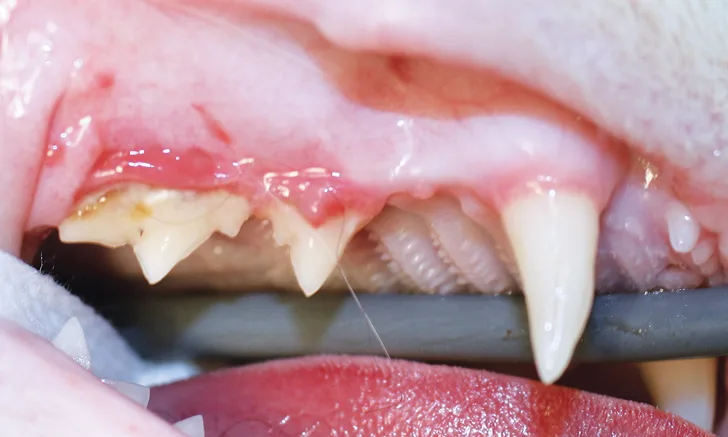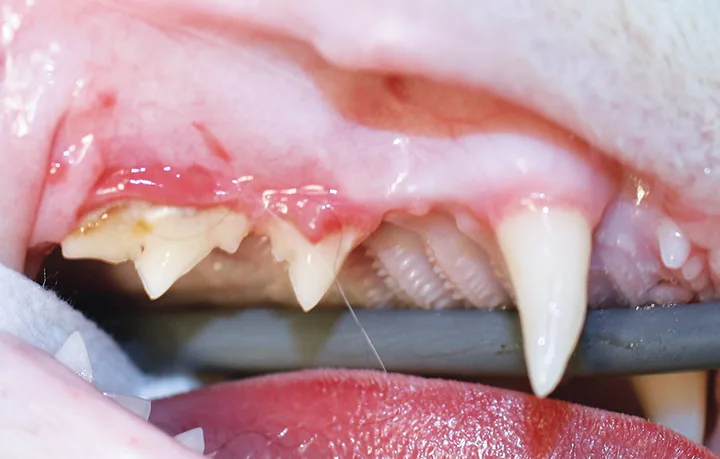Visual Guide to Feline Chronic Gingivostomatitis
Heidi B. Lobprise, DVM, DAVDC, Cibolo Creek Veterinary Hospital, Boerne, Texas

Stomatitis can refer to any inflammation in the oral cavity, but, clinically, it typically refers to the exaggerated immune response of some cats to minimal accumulations of plaque and calculus. In contrast, when such irritants accumulate on the teeth of relatively normal cats, periodontal disease with loss of tissue (eg, gingiva, bone) may occur.
It is important to identify cases with just alveolar and labial/buccal mucositis and no caudal mucositis. If these patients respond to adequate Phase I treatment (ie, complete cleaning and polishing, radiographs, and select extractions), stomatitis is unlikely.
Patients with caudal mucositis in the area bordered medially by the palatoglossal folds and fauces (formerly termed faucitis, which is less accurate) generally will not respond to Phase I treatment; Phase II intervention (ie, caudal mouth extractions, complete removal of all remaining premolars and molars, and debridement of inflamed tissues [eg, friable gingival margins and alveolar ridges]) is often recommended. Incisors can also be removed, but, unless there is significant inflammation or bone loss, the canine teeth are kept because of the additional surgical time and expense required for full-mouth extractions and/or owner preference to preserve the canines.

FIGURE 1
Significant alveolar and labial/buccal mucositis, likely associated with advanced periodontal disease, in a 5-year-old neutered male domestic shorthair cat. Radiographs are recommended to evaluate for any changes (eg, tooth resorption).